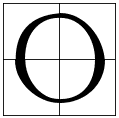Member-only story
What Did Medieval Europeans Know About America?
How garbled accounts of Viking voyages reached mainland Europe
 One day in Genoa, Italy, in the early 1340s, friar Galvano Fiamma wrote this intriguing passage in his book, Cronica Universalis:
One day in Genoa, Italy, in the early 1340s, friar Galvano Fiamma wrote this intriguing passage in his book, Cronica Universalis:
“Sailors who frequent the seas of Denmark and Norway say that northwards, beyond Norway, there is Iceland; further ahead there is an island named Grolandia, where the Polar Star remains behind you, toward the south. The governor of this island is a bishop. In this land, there is neither wheat nor wine nor fruit; people live on milk, meat, and fish. They dwell in subterranean houses and do not venture to speak loudly or to make any noise, for fear that wild animals hear and devour them. There live huge white bears, which swim in the sea and bring shipwrecked sailors to the shore. There live white falcons capable of great flights, which are sent to the emperor of Katai. Further westwards there is another land, named Marckalada, where giants live; in this land, there are buildings with such huge slabs of stone that nobody could build with them, except huge giants. There are also green trees, animals and a great quantity of birds. However, no sailor was ever able to know anything for sure about this land or about its features.”